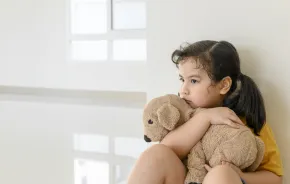 There was a time when most little girls took ballet at a storefront dance studio. The serious dancers also took tap and jazz. Those are still popular extracurricular options and offer a strong dance foundation for any student, but these days, many Puget Sound–area girls and boys are cutting some unexpected rugs. What is the lure of break dance? What can hula offer your little hooper? We took a twirl through some of the hottest dance styles in the region to find out.
There was a time when most little girls took ballet at a storefront dance studio. The serious dancers also took tap and jazz. Those are still popular extracurricular options and offer a strong dance foundation for any student, but these days, many Puget Sound–area girls and boys are cutting some unexpected rugs. What is the lure of break dance? What can hula offer your little hooper? We took a twirl through some of the hottest dance styles in the region to find out. Healthy minds, healthy bodies
“I believe that Hawaiian dancing teaches you to have grace in your life,” says Seattle Hula founder Leila Fernandez. That a hula dancer’s grace comes from skill, not from body type, is an attitude welcomed by parents.
“Hula is an opportunity for [dancers] to feel perfectly fit with who they are,” says Cathy Oaks-Hayes, whose daughters, ages 10 and 8, have been dancing with Seattle Hula for more than four years. It’s not a choice between healthy attitudes and healthy bodies, though. The core-muscle control and hip flexibility that Oaks-Hayes’ daughters developed in hula propelled them to the top of their martial arts class.
Surprisingly, break dancing can be gentler on the body than other dance styles, some teachers say. “We focus on rhythm and teaching a wide variety of movement. We don’t do repetitive drills, so it’s not as intense on the muscles,” says Anna Banana Freeze, instructor at Massive Monkees Studio: The Beacon. In break dance, confidence is as critical as physical ability. “I get the spotlight on students right away to get them away from being self-conscious. It teaches kids to be courageous and put themselves out there.”

At Creative Dance Center, founder Anne Green Gilbert bases the curriculum on neurological development patterns and uses modern dance as a means to a holistic end. “These days, more and more people are required to be sedentary, weakening our brain/body connection. If we’re using eyes alone, then the brain isn’t as highly functioning. When the blood moves through the body, then the mind is connecting,” says Leslie Mouton, whose three children (now 24, 12 and 11) began at Creative Dance as toddlers. “Anne has always talked about not the three R’s, but the three C’s — cooperation, critical thinking, creative problem solving.”
Cultural, community connections
For Melody Xie of the Melody Institute, language, dance and painting are interconnected expressions of Chinese culture. Many of her students study multiple subjects, and all of her dance lessons incorporate Chinese language. Seattle Hula begins every class with Hawaiian language instruction, too.
India is home to several classical dance traditions, but for most Indian and Indian-American kids today, dance means Bollywood. “Indian culture is a lot about dancing and singing. To perform Bollywood dance, you have to understand the culture of the place and also the time of the story. You can’t just perform the steps; you have to express the story,” says Nalini, director of the Nalini Dance Company and the children’s Bollywood performance group Nachle.
“We are originally from India, so Bollywood is part of our lives. My daughter was hoping to dance like she sees in the movies,” says Swasti Ganguly, whose 12-year-old daughter has studied with Nalini for about five years. “She learns more challenging moves as she grows, including some traditional kathak. It is the best to see my daughter and her friends growing as beautiful dancers.”
Ethnic dance classes also provide a meaningful way for families to explore a culture that is not their own. Now that some local theaters have begun playing Indian films, non-Indians who are passionate about Bollywood have begun to study the dance. Roughly half of the dancers at Seattle Hula fell in love with the graceful dance while on vacation in Hawaii. Another program, Marissa Baratian’s World Dance workshops, is specifically designed to introduce children to a variety of world cultures through movement.
Different dance forms also help build community connections and mentoring relationships. “For many youth in disenfranchised communities, break dance is the thing you do,” says Anna Banana Freeze. “It’s easier for young people of color when they have role models and a more giving environment.”
“Basically, it’s a team sport with a creative component. Students work collaboratively to develop dances, whether they are part of the performing group or not,” says Martha Johnson, administrative director of Creative Dance Center. This collaborative approach has helped her kids make lasting friendships both in and out of the studio, says Mouton.
“Hula is not just a class. You belong to a community that’s almost like a family,” Oaks-Hayes says. “I wanted my girls to learn dance and rhythm and self-confidence, and they have. But sisterhood keeps them coming back.”
Boys and girls
Even the trendiest dance schools struggle to achieve gender balance. “Our younger classes have lots of boys, who have an incredible time. Cultural norms lead to many of them dropping out as they get older,” says Johnson.
Boys should absolutely consider dance, says Seattle Hula’s Fernandez. Men’s hula is different from the feminine movements familiar to most people today, and it has an important cultural history. Hula was initially danced only by males; traditionally, the eldest son of a family became a dancer.
Break dance classes tend to be evenly divided, but boys dominate open studio time and in performance groups, Anna Banana Freeze says. She wants both the girls and boys in her classes to think of dance as ungendered. As everyone involved in dance agrees, the benefits of any dance style are simply too great for kids —boys and girls — to miss out on.











